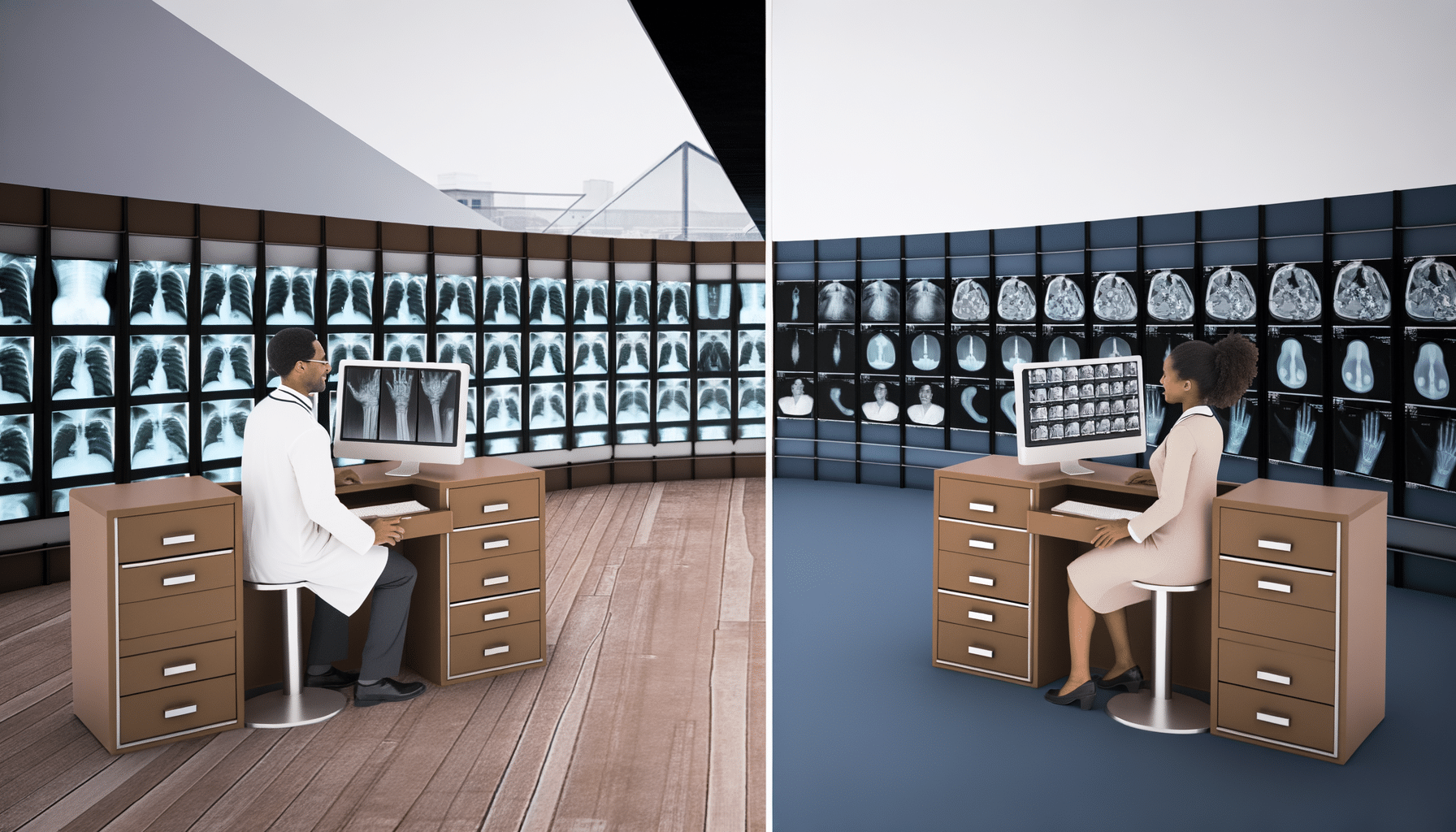Introduction
In the ever-evolving landscape of medical imaging, the journey of radiology records speaks volumes about the technological advancements we’ve witnessed over the years. The transition from traditional film methods to sophisticated digital archives isn’t just a story of innovation—it’s a revolution that has enhanced diagnostic accuracy and patient care. As someone who deeply values technological evolution, I am thrilled to share insights into how this transformation has reshaped the medical imaging industry.
From Film to Pixels: The Shift in Radiology Records
The dawn of medical imaging primarily revolved around film-based radiology records, which, though groundbreaking at the time, posed numerous challenges. Storage issues, limitations in sharing, and the declining quality over time were significant roadblocks. Recognizing these challenges, the industry embarked on a digital journey, modernizing radiology records and opening doors to new possibilities.
The Advent of Digital Imaging
The introduction of digital imaging revolutionized the management of radiology records:
The Role of PACS in Revolutionizing Digital Archives
The Picture Archiving and Communication System (PACS) has played a pivotal role in transforming radiology records from physical entities into digital powerhouses. PACS allows for the storage, retrieval, and analysis of medical images in a seamless manner. Its integration in healthcare settings has significantly improved workflow efficiency.
Radiology Records in a Connected World
Digital radiology records are not just confined to physical facilities anymore. The availability of cloud-based solutions has extended their accessibility and utility:
Challenges and Opportunities
Despite these advancements, the transition to digital archives in radiology records presents challenges that healthcare facilities must navigate:
On the flip side, these challenges are opportunities for innovation, pushing the industry to develop cost-effective solutions and innovative data migration strategies that can handle legacy records efficiently.
Conclusion
The transformation of radiology records from film to digital archives is more than a technological shift—it’s a substantial change in how we view and manage medical imaging. With benefits like enhanced accessibility, improved diagnostics, and potential AI integration, digital archives offer an engaging glimpse into the future of healthcare.
As we continue to innovate, it is vital for healthcare providers to embrace these technologies actively, ensuring patient care is always at the forefront of this revolution. I encourage all stakeholders in the medical imaging space to remain informed and proactive in adopting these advancements. The journey from film to digital is just the beginning; let’s continue pushing boundaries and exploring what lies beyond.
For more insights into how digital transformation is affecting various sectors, follow my journey with RecordsKeeper.AI, where we transform record management into a strategic asset for businesses and healthcare alike.








